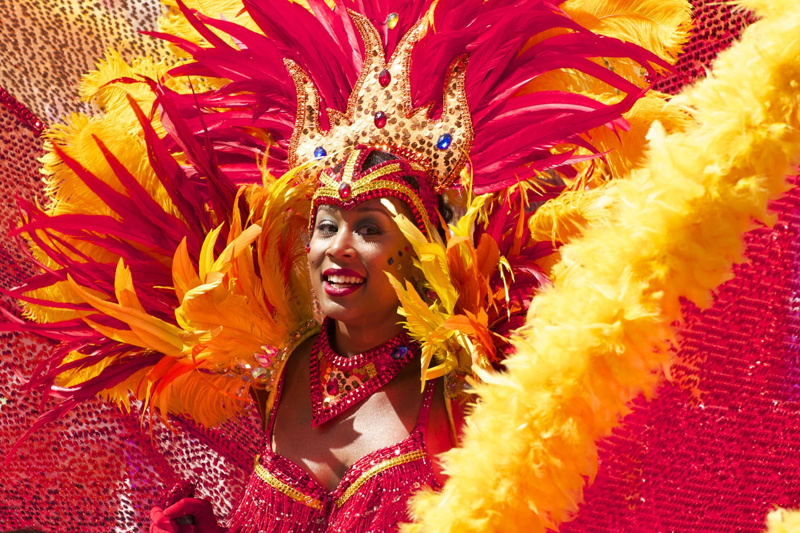Loja – Ecuador’s Cultural Capital

Loja is considered the seat of Ecuadorian music and culture. A local saying is, "The one who does not play the guitar can sing a song; the one who does not sing a song can write a verse; the one who does not write a verse reads a book." Loja often goes unnoticed by tourists because of its distance from the capital city of Quito in northern Ecuador. Loja is located in the southern Cuxibamba valley bordering the provinces of Zamora-Chinchipe and El Oro, and Peru on the south.
Music flourishes in Loja, with numerous cafes, music and salsa clubs nestled in the Centro. On Sundays, the local police band performs in the Plaza de Independencia outside of San Sebastian Church. Bulletins are posted all over the city announcing all varieties of concerts, many free, including vallenato, cumbia, salsa, classical, hip-hop, rock, and the famous romantic Lojano ballads.
Artworks can be seen all over the city such as frescoes, painted tile murals, statues and monuments to famous Lojanos and Ecuadorians. Within one block of the central plaza there are no less than three cultural centers and museums where you may study many of the arts such as music, theater and dance. At home in Loja are some of Ecuador’s top universities, a law school, and assorted arts and technical institutes which draw many young people to the city giving it a youthful vibe.
My favorite attraction in Loja is the colonial architecture. The magnificent gates of the city presented by King Felipe II of Spain in 1571, is a castle that houses four galleries displaying contemporary Lojano artwork. In the heart of the city there are grand Spanish colonial-style buildings of adobe, with enormous windows and arched entryways. Many of them have broad balconies shored up by massive stone columns. Some of the most notable buildings are the cathedrals and churches.
The main Cathedral, one of the largest in Ecuador, located on the central square is an example of exquisite colonial architecture dating from the sixteenth century. The Church of Santo Domingo built in 1557 in the Gothic style, was damaged by an earthquake in 1867 that left only the twin spires of the original building standing. The church was restored in colonial style, leaving the original spires as the only remnant of its original Gothic style.
One of the notable landmarks of Loja on the Plaza San Sebastian, also called Plaza de Independencia, stands the thirty-two meter or 105 foot clock tower commemorating Ecuador’s independence from Spain on November 18, 1820. The four faces of the clock tower have brass bas relief scenes of the city's history. You can climb to the top of the clock tower for a spectacular view of the city.
Loja is a beautiful city with picture-perfect colonial architecture, paved streets, pedestrian walkways winding along its two rivers, Rio Malacatos and Rio Zamora that meet at the gates of the city. Lojanos are justly proud of their city, arts, education and culture. A visit to Ecuador is not complete without seeing Loja.
Music flourishes in Loja, with numerous cafes, music and salsa clubs nestled in the Centro. On Sundays, the local police band performs in the Plaza de Independencia outside of San Sebastian Church. Bulletins are posted all over the city announcing all varieties of concerts, many free, including vallenato, cumbia, salsa, classical, hip-hop, rock, and the famous romantic Lojano ballads.
Artworks can be seen all over the city such as frescoes, painted tile murals, statues and monuments to famous Lojanos and Ecuadorians. Within one block of the central plaza there are no less than three cultural centers and museums where you may study many of the arts such as music, theater and dance. At home in Loja are some of Ecuador’s top universities, a law school, and assorted arts and technical institutes which draw many young people to the city giving it a youthful vibe.
My favorite attraction in Loja is the colonial architecture. The magnificent gates of the city presented by King Felipe II of Spain in 1571, is a castle that houses four galleries displaying contemporary Lojano artwork. In the heart of the city there are grand Spanish colonial-style buildings of adobe, with enormous windows and arched entryways. Many of them have broad balconies shored up by massive stone columns. Some of the most notable buildings are the cathedrals and churches.
The main Cathedral, one of the largest in Ecuador, located on the central square is an example of exquisite colonial architecture dating from the sixteenth century. The Church of Santo Domingo built in 1557 in the Gothic style, was damaged by an earthquake in 1867 that left only the twin spires of the original building standing. The church was restored in colonial style, leaving the original spires as the only remnant of its original Gothic style.
One of the notable landmarks of Loja on the Plaza San Sebastian, also called Plaza de Independencia, stands the thirty-two meter or 105 foot clock tower commemorating Ecuador’s independence from Spain on November 18, 1820. The four faces of the clock tower have brass bas relief scenes of the city's history. You can climb to the top of the clock tower for a spectacular view of the city.
Loja is a beautiful city with picture-perfect colonial architecture, paved streets, pedestrian walkways winding along its two rivers, Rio Malacatos and Rio Zamora that meet at the gates of the city. Lojanos are justly proud of their city, arts, education and culture. A visit to Ecuador is not complete without seeing Loja.

Related Articles
Editor's Picks Articles
Top Ten Articles
Previous Features
Site Map
Content copyright © 2023 by Valerie Aguilar. All rights reserved.
This content was written by Valerie Aguilar. If you wish to use this content in any manner, you need written permission. Contact Valerie D. Aguilar for details.


